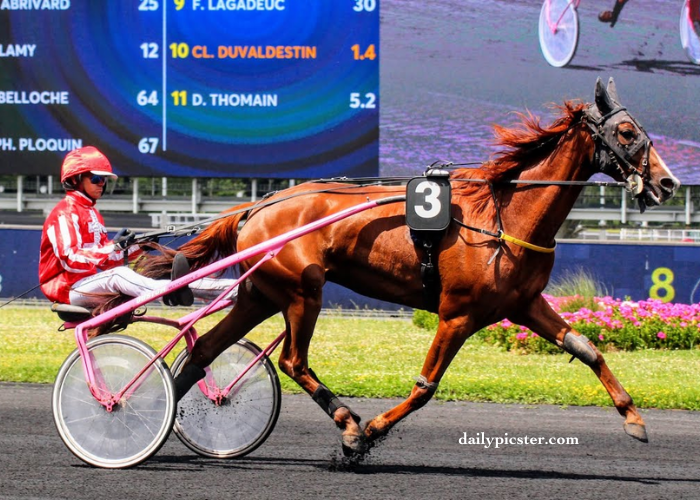The world of horse racing is a captivating blend of tradition, excitement, and strategy. One cannot delve into this universe without encountering the term La Filiere Turf. For the uninitiated, La Filiere Turf is more than just a phrase; it’s a concept that has been woven into the very fabric of horse racing. In this comprehensive exploration, we will demystify the enigmatic world of La Filiere Turf, understanding its history, significance, and the intricate web of factors that make it an indispensable element in the realm of horse racing.
The Genesis of La Filiere Turf
La Filiere Turf, which translates to The Turf Line in English, traces its origins to France. It’s an expression used in horse racing circles to refer to the line of pedigree or bloodline of a horse. To fully grasp the concept, we must delve into the history of horse racing, particularly in France.
France has a rich history of horse racing, dating back to the 18th century. It was during this time that thoroughbred horse racing, as we know it today, took root in the country. The French, with their affinity for horses and equestrian traditions, played a pivotal role in the evolution of the sport. As a result, they developed a unique system for identifying and preserving the bloodlines of horses, which came to be known as La Filiere Turf.
In essence, La Filiere Turf is a comprehensive record of a horse’s ancestry. It includes information about the horse’s parents, grandparents, and sometimes even further back. This lineage is meticulously documented and forms the basis for understanding a horse’s potential in racing. To those who are new to horse racing, this might sound like a mere genealogical record. However, it’s much more than that.
The Significance of La Filiere Turf in Horse Racing
Predicting Performance: La Filiere Turf is, above all, a predictive tool. It allows trainers, breeders, and owners to assess a horse’s potential on the racecourse. By examining the lineage, one can make educated guesses about a horse’s strengths and weaknesses, whether it’s inclined toward sprinting or long distance racing, and even its preferences for specific track conditions.
- Selective Breeding: The preservation and study of bloodlines have enabled breeders to selectively pair horses with desirable traits. Over generations, this has led to the development of horse breeds with specific characteristics optimized for various racing disciplines.
- Hereditary Health Insights: La Filiere Turf isn’t just about racing prowess. It can also reveal potential hereditary health issues, helping owners and trainers take preventive measures and make informed decisions about a horse’s career.
- Market Value: A horse’s pedigree significantly influences its market value. Horses from esteemed bloodlines often command higher prices at auctions and sales.
- Respect for Tradition: La Filiere Turf is deeply ingrained in the culture of horse racing, particularly in France. It’s a way of paying homage to the sport’s rich history and traditions.
Deciphering the La Filiere Turf Data
To the untrained eye, a La Filiere Turf record might appear as a jumble of names and numbers. However, it holds a wealth of information for those who can interpret it. Let’s break down some of the key elements commonly found in these records.
- Sire: The sire is the father of the horse in question. This is one of the most crucial factors when assessing a horse’s potential, as the father’s lineage plays a significant role in determining the horse’s genetic makeup.
- Dam: The dam, or mother, is another essential part of the equation. The mother’s bloodline, along with her racing and breeding history, contributes significantly to the horse’s potential.
- Grandparents: Going back a generation, we find the grandparents. These ancestors can have a profound impact on a horse’s traits, both in terms of racing and health.
- Stallions: Often, notable stallions appear in the bloodline. These are horses that have made significant contributions to the sport through their offspring. Their presence can be a positive sign.
- Racing History: Many La Filiere Turf records also include details about the racing history of the horse’s ancestors. This can shed light on the family’s racing achievements.
- Breeding Records: Information about the success of the horse’s ancestors in breeding is also part of the record. It’s an indicator of the family’s ability to produce winning offspring.
Modern Technology Meets Tradition
In today’s digital age, the tradition of La Filiere Turf has adapted to modern technology. While the core principles remain the same, the way this information is stored and accessed has evolved. Online databases and digital records have made it easier for horse racing enthusiasts and industry professionals to access and analyze bloodline information.
These digital databases not only store information about individual horses but also allow for advanced data analysis. This includes predictive modeling based on the genetic makeup of a horse and its ancestors. This blending of tradition with technology has made La Filiere Turf more accessible and comprehensive than ever before.
Challenges and Controversies
Like any longstanding tradition, La Filiere Turf has faced its share of challenges and controversies. Some critics argue that placing too much emphasis on bloodlines can lead to inbreeding, diminishing the overall genetic diversity of racehorses. This concern has led to ongoing discussions about responsible breeding practices within the industry.
Additionally, there have been instances of fraudulent or inaccurate data within bloodline records. This can lead to misunderstandings about a horse’s true potential and can have financial implications, particularly in the buying and selling of racehorses.
The Global Influence of La Filiere Turf
While La Filiere Turf is deeply rooted in French horse racing culture, its influence extends far beyond the borders of France. As horse racing has become a global phenomenon, the concept of lineage and bloodlines has been adopted by racing enthusiasts worldwide. Thoroughbred racing, in particular, relies heavily on the study of bloodlines to identify champions.
In the United States, for example, the Triple Crown races (the Kentucky Derby, Preakness Stakes, and Belmont Stakes) often feature horses with impressive bloodlines. The breeding and sales of racehorses are major industries in countries like the United Kingdom, Ireland, Australia, and Japan, and the study of lineage is a fundamental aspect of these endeavors.
La Filiere Turf and Betting
For those who engage in horse race betting, La Filiere Turf can be a valuable tool. While it’s not a guaranteed way to pick winners, understanding a horse’s bloodline can provide insights that may not be immediately evident from a horse’s recent racing form. Bettors can use this information to make more informed wagers, taking into account a horse’s potential and preferences based on its lineage.
It’s important to note that successful betting on horse racing involves considering multiple factors, including a horse’s current form, the jockey, the track conditions, and more. La Filiere Turf is just one piece of the puzzle, albeit a fascinating and historically significant one.
Conclusion
La Filiere Turf, with its deep roots in the history of horse racing, stands as a testament to the enduring traditions of the sport. It’s a concept that combines the elegance of equestrian tradition with the precision of data analysis. While the world of horse racing continues to evolve, La Filiere Turf remains a pivotal element, guiding the decisions of breeders, trainers, owners, and bettors.
The story of La Filiere Turf is a story of generations, a narrative that links past, present, and future in the world of horse racing. It reminds us that, beneath the glamour and excitement of the racetrack, there lies a rich tapestry of heritage and history, woven into every stride of these magnificent creatures as they race toward the finish line, guided by their lineage and legacy.



